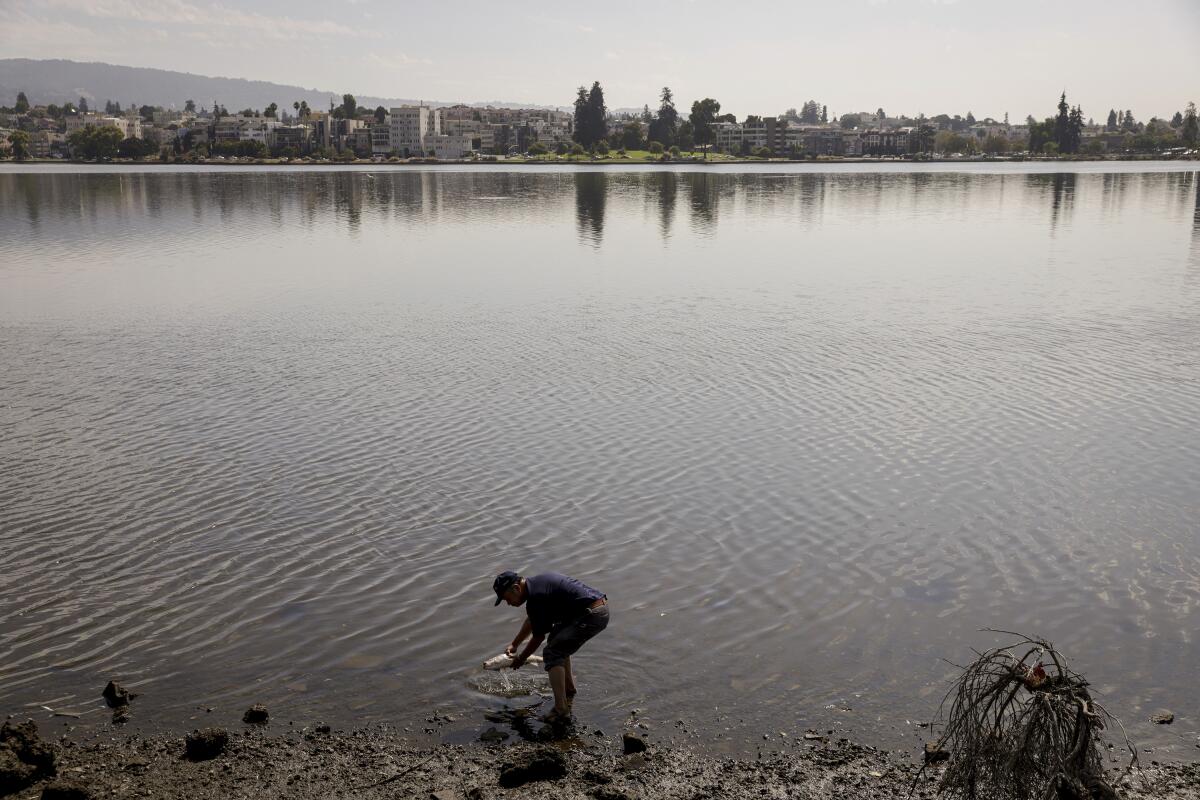Dead fish wash ashore as toxic red tide hits the San Francisco Bay Area

- Share via
At least 21 marine animals have washed ashore dead throughout the San Francisco Bay Area in the last week — potential victims of the return of the same toxic red tide that killed thousands of fish in the region last year.
Harmful algae blooms of this kind can be caused by a number of different microorganisms, but this red tide is associated with one called Heterosigma akashiwo, which was also the culprit behind last year’s event, said Ian Wren, an algae expert and staff scientist for San Francisco Baykeeper.
This latest red tide was first seen in Seaplane Lagoon, the Berkeley Marina, Belvedere Cove and near Muir Beach, according to the San Francisco Bay Regional Water Quality Control Board.
A toxic ride tide was detected last weekend from the Berkeley Marina, Emeryville, Albany, Richardson Bay and Muir beach, according to experts.
The California Department of Fish and Wildlife set up a project on iNaturalist to collect reports of dead marine life in the Bay Area. So far, people have observed dead marine animals in multiple areas including the Berkeley Marina, Albany Beach, Marina Beach and Point Molate Beach.
The carcasses reported so far include sturgeons, bat rays, chinook salmon and striped bass.
Algae blooms produce a toxin that is deadly to fish and other marine animals. As the bloom spreads, bacteria in the water consume the algae. The process depletes the water of oxygen, which risks suffocating fish and other creatures.
Wren said scientists are optimistic this year’s algae bloom will not be as severe as last year’s, but it’s still early.
A red tide in the San Francisco Bay Area is killing thousands of fish and other marine life, creating a foul odor as a heat wave moves in.
Nutrient concentrations in the bay are lower now than they were at the start of the algae bloom last year, according to Wren.
“Nutrients are kind of an essential building block for any kind of algae bloom and if the nutrient pool is smaller than that usually associates with a small algae bloom,” he said.
The water quality control board has been working to determine how to best manage the nutrients being inputted into the bay. Wastewater disposed in large bodies of water can result in high amounts of nitrogen and phosphorus, which can drive the growth of algae blooms.
“This bloom could fizzle out and we don’t see anymore, or it could get a lot worse,” Wren said.
Times staff writer Summer Lin contributed to this report.
More to Read
Sign up for Essential California
The most important California stories and recommendations in your inbox every morning.
You may occasionally receive promotional content from the Los Angeles Times.
















